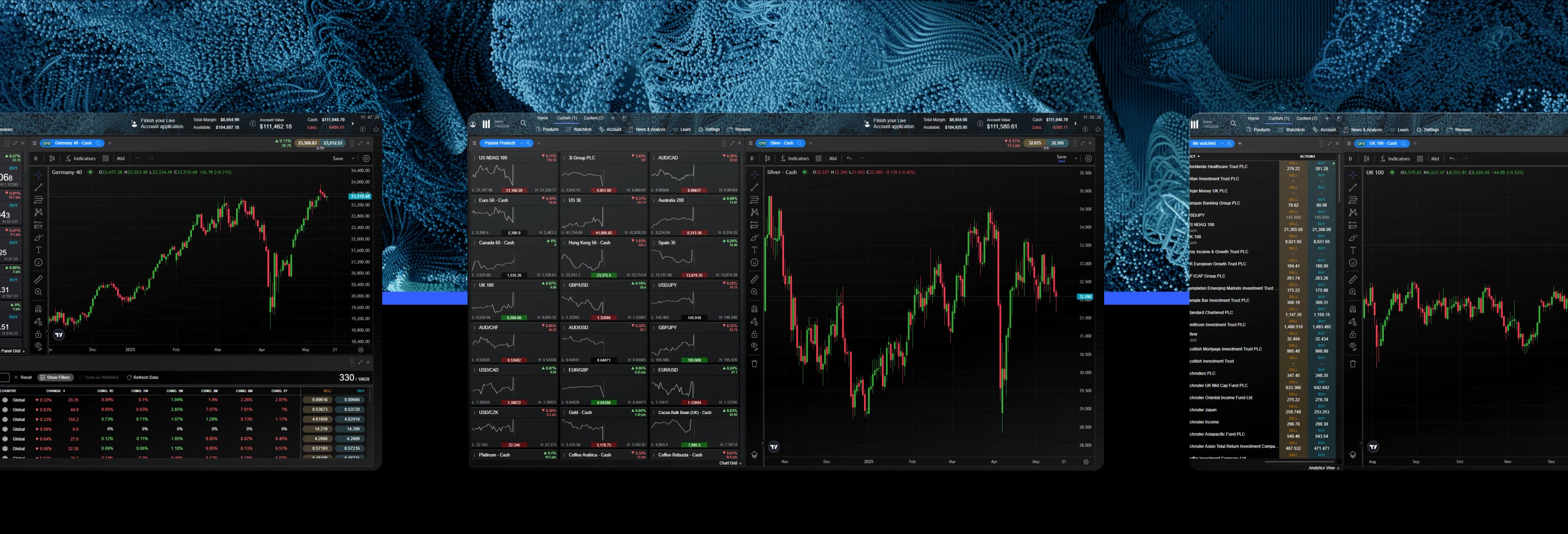What is CFD trading?
A contract for difference is a financial derivative product that pays the difference in settlement price between the opening and closing of a trade. CFD trading enables you to speculate on rising or falling prices across a range of fast-moving global financial markets, such as forex, indices, commodities, shares and treasuries.
What are CFDs?
The meaning of CFD is 'contract for difference', which is a contract between an investor and an investment bank, usually in the short-term. At the end of the contract, the parties exchange the difference between the opening and closing prices of a specified financial instrument, which can include forex, indices, treasuries, shares and commodities. Trading CFDs means that you can either make a profit or loss, depending on which direction your chosen asset moves in.
What is CFD trading?
Contracts for difference are financial derivative products that allow traders to speculate on short-term price movements. Some of the benefits of CFD trading are that you can use margin trading, and you can go short (sell) if you think prices will go down or go long (buy) if you think prices will rise. You can also use CFD trades to hedge an existing physical portfolio. With a CFD trading account, our clients can choose between holding positions in the long-term and quick day trading strategies.
How does CFD trading work?
When you trade CFDs, you don’t buy or sell the underlying asset (e.g. a physical share, currency pair or commodity). We offer CFDs on thousands of global markets and you can buy or sell a number of units for a particular product or instrument depending on whether you think prices will go up or down. Our wide range of products includes shares, treasuries, FX, commodities.
For every point the price of the instrument moves in your favour, you gain multiples of the number of units you have bought or sold. For every point the price moves against you, you will make a loss. Please remember that for retail clients you could lose up to the amount of your deposit.
What is leverage?
Contracts for difference (CFDs) is a leveraged product, which means that you only need to deposit a small percentage of the full value of the trade in order to open a position. This is called ‘trading on margin’ (or margin requirement). While trading on margin allows you to magnify your returns, your losses will also be magnified as they are based on the full value of the position. This means you could lose more than your deposits.
How do CFD margins work?
The question of how margins work is perhaps best answered with an example. Let’s imagine that a trader wants to go long on – or 'buy' – 10 shares of Vodafone stock. For the purposes of this example, let's say the stock is trading at $1 a share. The full value of this position would be $10. However, the margin required to open this CFD trade is 20%, so a CFD trader would need only $2 to enter the trade.

What’s the difference between going long and going short?
With CFD trading, you can choose to buy or sell a financial instrument. Buy (go long) if you think the price will rise, or sell (go short) if you think the price will go down.
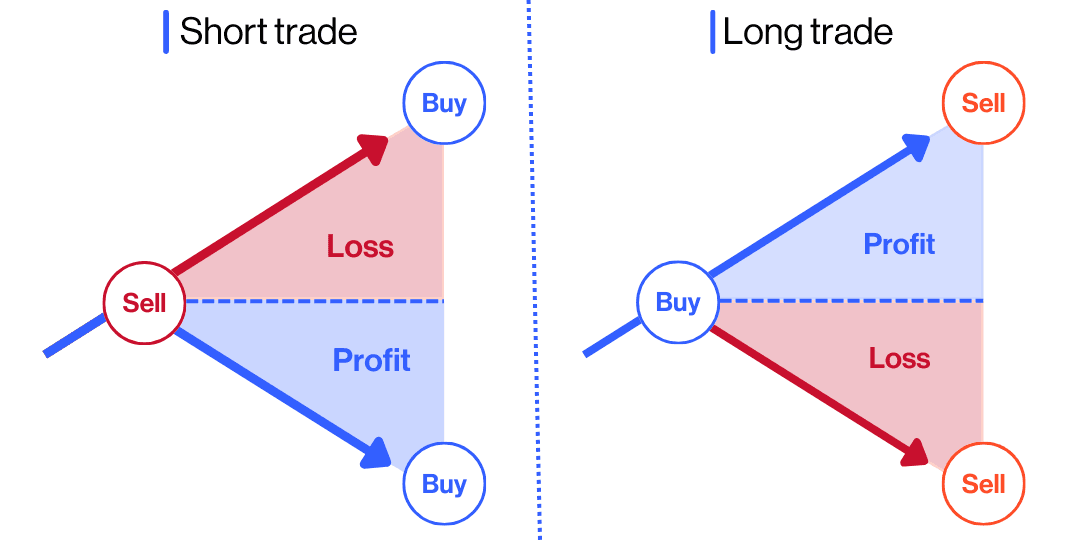
What are the costs of CFD trading?
Spread: As in all markets, when trading CFDs you must pay the spread, which is the difference between the buy and sell price. You enter a buy trade using the buy price quoted and exit using the sell price. As one of the leading CFD providers globally, we understand that the narrower the spread, the less you need the price to move in your favour before you start making a profit or loss. Our spreads are therefore always competitive so you can maximize your ability to net a potential profit.
Holding costs: At the end of each trading day (5pm New York time), any positions open in your account may be subject to a charge called a 'holding cost'. The holding cost can be positive or negative depending on the direction of your position and the applicable holding rate.
Market data fees: To trade or view our price data for share CFDs you must activate the relevant market data subscription for which a fee will be charged. View our CFD market data fees.
Commissions (only applicable for shares): You must also pay a separate commission charge when you trade share CFDs. Commission-free trading is available for all US and Canadian shares & ETFs.
Example of a CFD trade
Going long on a company 'share' via a CFD
Now let’s look at a more detailed example. You think the company’s price is going to go up so you decide to buy 1,000 CFDs, or ‘units’ at $10.00. A separate commission charge of $9 would be applied when you open the trade, as 0.09% of the trade size is $9 (1,000 units x $10.00 = $10,000 x 0.09%).
Company ABC has a margin rate of 20%, which means you only have to deposit 20% of the total value of the trade as position margin. Therefore, in this example your position margin will be $2000 (1,000 units x $10.00 = $10,000 x 20%)
Remember that if the price moves against you, losses will be based on the full value of the position.
⚠ Remember, if the instrument's price moves against you, you could lose more than $2,000, as losses are always based on the full value of the position.
Because CFD trading uses leverage, the amount of money needed to open this position is less than the amount needed to open the equivalent non-leveraged deal.
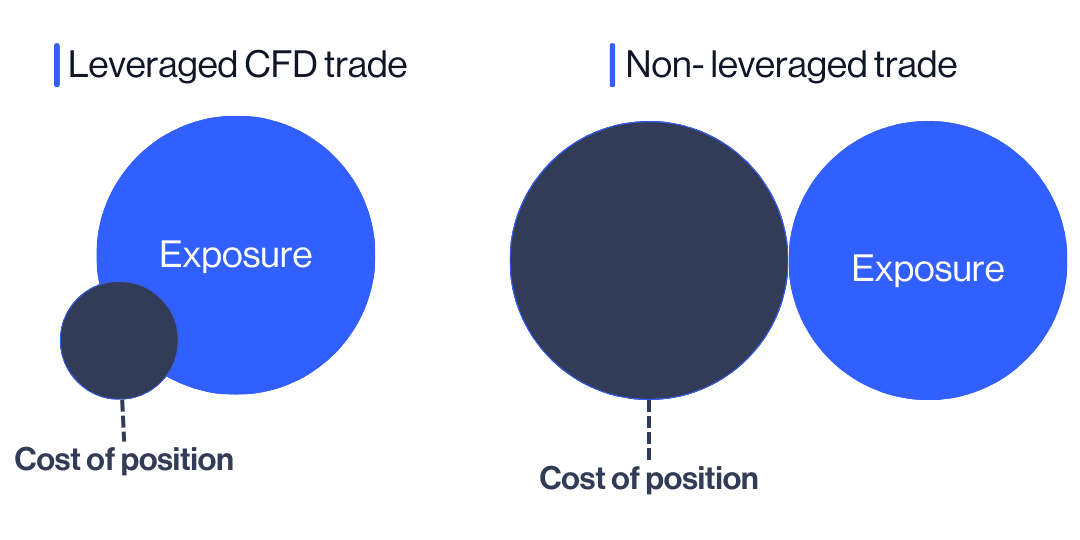
Next, let’s continue this example by looking at two potential outcomes of this trade.
A profitable trade
Your prediction was correct and the price rises over the next week to $11.00 / $11.02. You decide to close your buy trade by selling at $11.00 (the current sell price). Remember, commission is charged when you exit a trade too, so a charge of $9.90 would be applied when you close the trade, as 0.09% of the trade size is $9.90 (1,000 units x $11.00 = $11,000 x 0.09%).
The price has moved $1.00 in your favour, from $10.00 cents (the initial buy price) to $11.00 cents (the current sell price). Multiply this by the number of units you bought (10,000) to calculate your profit of $1,000, then subtract the total commission charge ($9 at entry + $9.90 at exit = $18.90) which results in a total profit of $981.10. More information about holding costs can be found here.
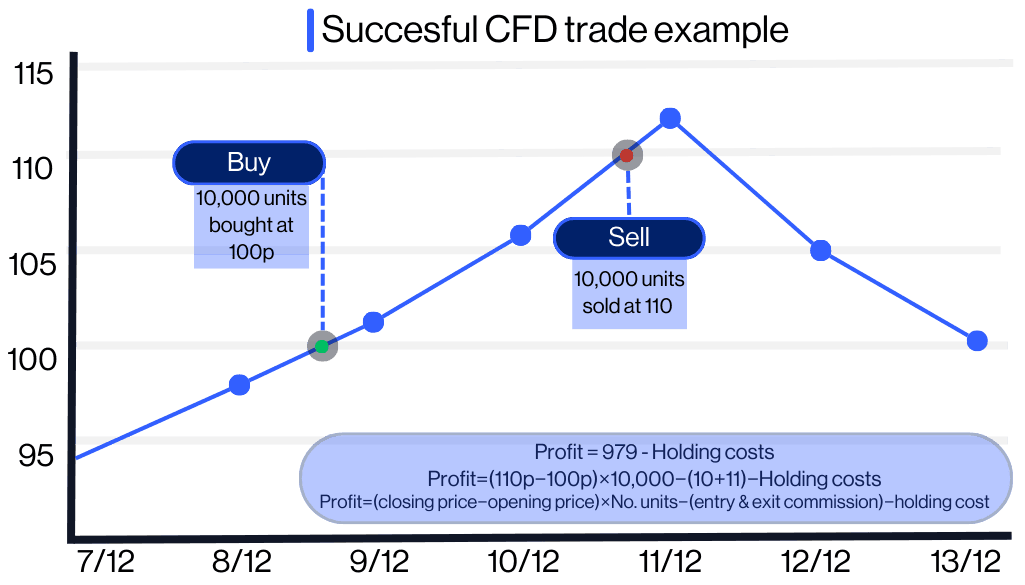
A losing trade
In this scenario, let’s assume you were wrong, and the price of ABC drops over the next week to $9.30 / $9.32. You think the price is likely to continue dropping so, to limit your losses, you decide to sell at $9.30 (the current price) to close the trade. As commission is charged when you exit a trade too, a charge of $8.37 would apply, as 0.09% of the trade size is $8.37 (1,000 units x $9.30 = $9,300 x 0.09%).
The price has moved 70 cents against you, from $10.00 (the initial buy price) to $9.30 (the current sell price). Multiply this by the number of units you bought (1,000) to calculate your loss of $700, plus the total commission charge ($9 at entry + $8.37 at exit = $17.37) which results in a total loss of $717.37.
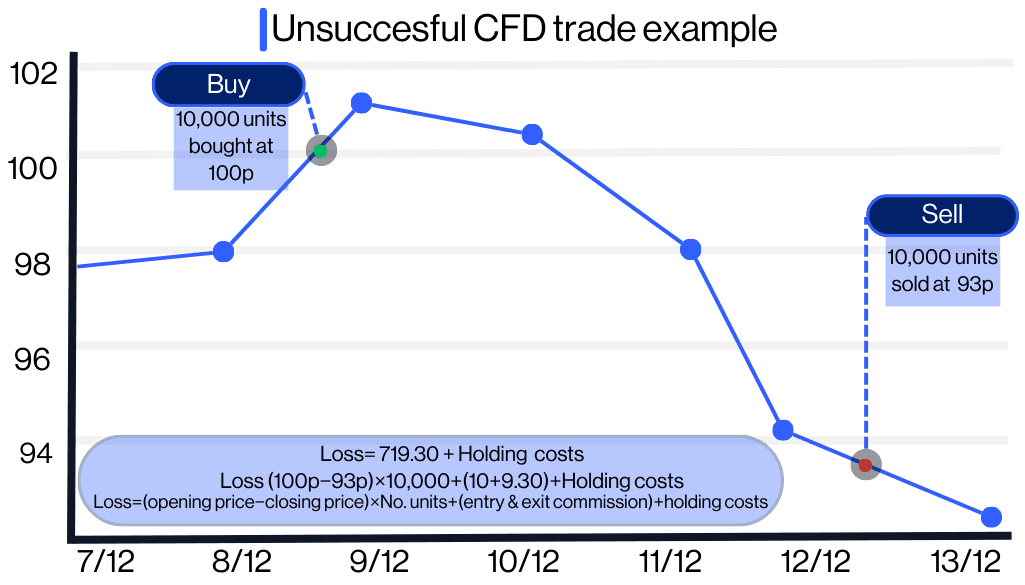
How do you hedge an existing portfolio with CFD trading?
If an investor thinks their share portfolio may lose value in the near term, they could use a CFD hedging strategy to offset their losses. Let’s say an investor holds $5,000 worth of Tesla shares and is worried that the Tesla share price may fall. The investor could short, or sell, the equivalent number of units of Tesla via CFDs. Then, if Tesla’s share price falls in the underlying market, the loss in the value of the investor’s share portfolio could potentially be offset by the profit made on the short-selling CFD trade.
Trading CFDs to hedge a share portfolio is a popular strategy among investors, especially during periods of market volatility. It’s important to bear in mind that applicable fees, such as overnight holding costs, could impact this strategy, potentially lowering the expected return.
Why trade CFDs?
Flexibility: You can trade CFDs on a wide range of financial markets, including stocks, indices, treasuries, commodities and FX, enabling you to diversify your portfolio and seize potential opportunities in various markets.
Leverage: CFDs use leverage, so you deposit only a fraction of the full value of the trade to open a position. Leverage magnifies potential gains and losses equally.
Hedging: Trading CFDs as part of a hedging strategy may help you to offset the negative impact of a market downturn on your investment portfolio.
Versatility: CFD trading can accommodate various trading strategies. Whether you favour day trading, scalping, or swing trading, you may be able to implement your preferred approach and react quickly to changing market conditions with CFDs.
Disclaimer: CMC Markets is an execution-only service provider. The material (whether or not it states any opinions) is for general information purposes only, and does not take into account your personal circumstances or objectives. Nothing in this material is (or should be considered to be) financial, investment or other advice on which reliance should be placed. No opinion given in the material constitutes a recommendation by CMC Markets or the author that any particular investment, security, transaction or investment strategy is suitable for any specific person. The material has not been prepared in accordance with legal requirements designed to promote the independence of investment research. Although we are not specifically prevented from dealing before providing this material, we do not seek to take advantage of the material prior to its dissemination.
